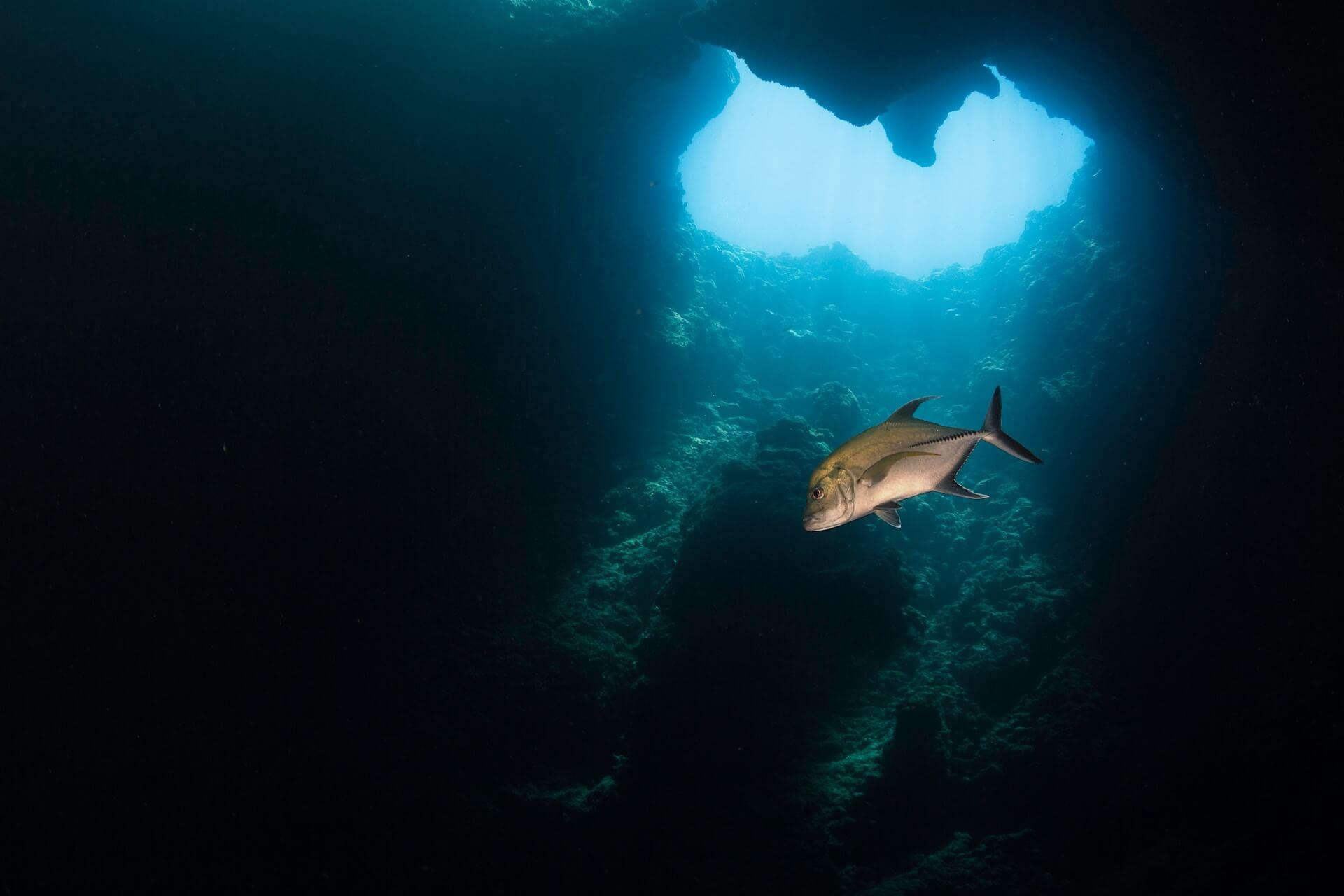Belize boasts a coastline with the longest barrier reef in the Northern Hemisphere. It starts at the Mayan Riviera and stretches all the way to the coast of Honduras. Diving here is a real treat. Three of the four submarine atolls of the Caribbean Sea lie off its coast. Belize offers amazing diving in smaller bays and more challenging ocean dives. Divers are especially attracted by the incredible mix of rocky reefs, smaller islands and caves. The biggest attraction, however, is the phenomenal Blue Hole karst sinkhole.
Belize's atmosphere and nature
Upon arrival in Belize, you'll feel a faint sense of wildness. There are echoes of the pirate expeditions that once returned from the Americas. In Belize, you will see the real, true Caribbean country, not a show for tourists as in the Riviera Maya and other destinations in the Caribbean. You have the opportunity to find a really great mix of unusual experiences from beautiful beaches on small islands to beautiful inland mountain ranges and Mayan sites. Similar experiences await divers here. Beneath the surface, you'll be mesmerised not only by the barrier reef, but also by the amazing karst caves and canyons. As a former British colony, the official language in Belize is English, which is a huge advantage. It makes it very easy to get along with everyone, and their accent is very charming.
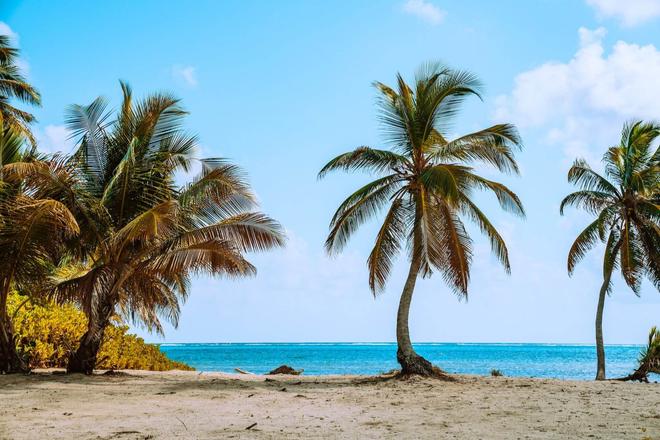
Belize is located off the Caribbean coast of Central America. It covers an area of over 22,000 square kilometres, but has only 200,000 inhabitants and more than forty percent of Belize's total land area is covered by nature reserves.
The terrestrial nature and other natural beauties are the real reason to visit Belize. One look at the numerous reefs and islands along the coast and it is clear that Belize is also a magnet for divers from all over the world. Off the coast of Belize stretches the Inter-American Barrier Reef, the longest barrier reef in the Northern Hemisphere. This reef offers a variety of diving activities for all those interested in diving, both beginners and true experts.
Mesoamerican Barrier Reef
The reef itself is about 280 km long and stretches along the entire coastline from the Yucatán Peninsula (Mexico) in the north, to the coast of Honduras in the south. It thus forms a belt that extends between 15 and 30 kilometres from the coast, forming a natural barrier that separates the coast and beaches from the open ocean.
Coral islands, known as cays or cayes, are scattered throughout its length. The distance between the reef and the coast is quite large, so most dive bases are located on these islands – especially on Ambergis Cay and Caye Caulker. The latter is also the gateway to the aforementioned Blue Hole.
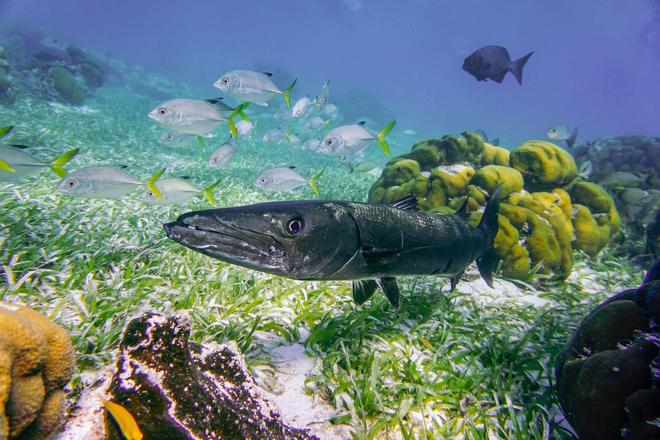
Further southeast of these islands you will find three underwater atolls in the Caribbean Sea – Glovers, Turnefee and Lighthouse. These Belizean atolls lie atop two parallel submarine ridges. This distinguishes them from other atolls in the Pacific region, which usually grow on volcanoes. The atolls in Belize extend so close to the surface that they may have developed massive growths of coral and underwater fungi. This barrier reef has been declared a UNESCO World Heritage Site. It is also the site of intensive conservation and research activities supported by unpaid organisations.
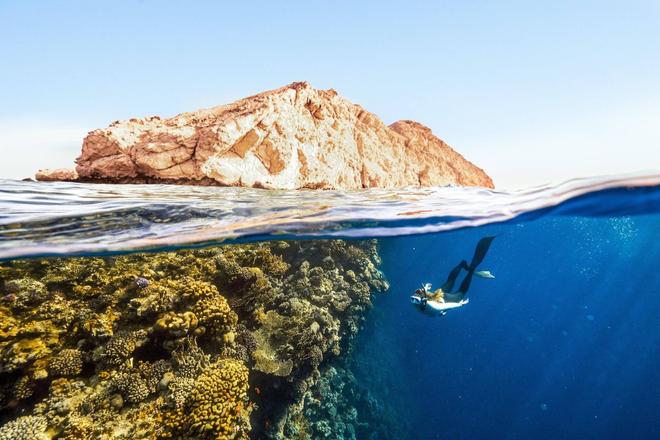
Diving on the barrier reef
Coral reefs in the Caribbean Sea have their own distinctive character. While they do not exhibit the diversity of life found on the Great Barrier Reef off the coast of Australia or elsewhere in the Indian Ocean, they can lay claim to some of the most beautiful individual corals and underwater sponges.
Here you will find the most monumental underwater sponges from around the world. Some barrel sponges are over 100 years old and reach a diameter of around two metres. An unforgettable diving experience in Belize is the immense variety of underwater environments. You'll find bustling reef ecosystems on gentle sandy slopes, as well as steep cliffs around which hundreds of diverse marine life swim.
The offshore reefs take the form of small coral systems, which are home to most of the five hundred species of fish. You'll also find five different species of clipfish among them. Large numbers of snappers, gannets and spiny dogfish also swim around these reefs. You may also encounter larger animals such as "sea cows", the so-called manatees. In some parts of the barrier reef or even on the atolls, you can meet the itajara canary up to 1.5 metres long. You can see Solander's mackerel, manta rays and a variety of sharks, including the basking shark.
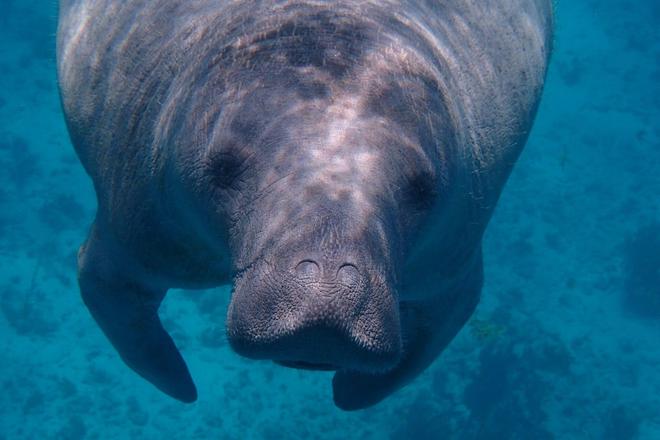
The magical Blue Hole
For the more adventurous divers, one of the main highlights of diving in Belize is the Blue Hole underwater sinkhole. This huge circular cavity in the reef lies approximately 80 kilometers off the coast of Belize right in the middle of LightHouse Atoll. It has been an important stop for divers for more than 40 years, ever since it was made internationally famous in 1972 by French underwater explorer and filmmaker Jacque Cousteau, who explored its bottom in the mini-submarine Calypso.
The Blue Hole is a deep-water sinkhole with an almost perfect circular shape, 274 metres in diameter and with water depths of up to 125 metres in some places. The upper visible part of the entire formation is actually narrower than the deeper parts. This sinkhole is more like a gigantic bell rising from the seabed. The Blue Hole was formed from a cave more than 15,000 years ago by the dissolution of limestone rock. It must have once been above the ocean, because the edges of the bell are decorated with beautiful stalactites. Later, as the ocean levels rose, the ceiling of the cave caved in and the whole thing sank into the depths.
A journey into the heart of the Blue Hole
Diving the Blue Hole is quite challenging and should not be taken lightly. The most beautiful spots lie deep under overhangs between stalactites and divers have to float at a considerable depth in a column of water that drops tens of metres further down.
The dive starts on a short sandy slope that stretches to the jagged edge of the cavity itself. Most divemasters check their charges at this point to make sure they are ready for the dive.
From this edge, the rock face drops steeply straight down into the depths, which then begin to part to the sides. This creates a huge overhang. If you dive under the overhang, you'll see beautiful stalactites. Some of them are over three metres long and form amazing formations. If you look underneath, you can clearly see the edge of what looks like another section of the cavern. From here, the walls of the bell finally begin to fall to the seabed.
If you're lucky, you'll encounter representatives of the permanent population of great white sharks that live in this formation during your dive. In recent years, divers and instructors have begun to feed these beautiful sharks. As you ascend to the surface, you can see interesting stingrays and tube sponges on the gentler slopes leading to the surface. It's a nice end to an exciting dive.
Other dive sites
Other amazing places to dive in Belize include Elbow on Turneffe Atoll, Long Caye Wall on Glovers Reef or Shark Ray Alley. A real treat is also a dive at Half Moon Caye Wall, which rises from the murky depths of around 1,000 metres to a depth of just ten metres below the surface.
Belize is not just beautiful diving
The interior of Belize will also offer great adventures for nature lovers. Here you can admire some of the last areas of native tropical rainforest in Central America. There are also a number of nature reserves that cater to the needs of tourists looking for extraordinary experiences.
If you are visiting Belize you should not miss the opportunity to visit the ruins of buildings from the Mayan period, which are more than 1500 years old. Here you will find remnants of Mayan buildings such as Altun Ha or Lamanai. Both places are easily accessible with organised tours.
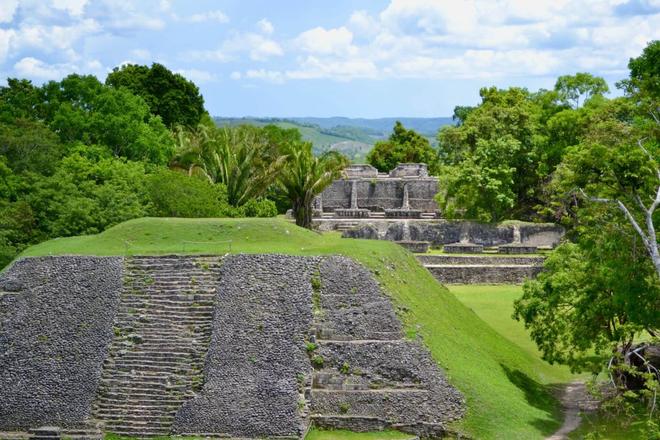
Most of the resorts on the mainland and islands offer all levels of service from the needs of backpackers to those who require the luxury of five-star service.
We would rather discourage a visit to Belize City. Avoid this place if you can, although this is not too easy as it's a major transportation hub. So always plan your trip so that you don't arrive here at night. Belize City unfortunately suffers from the syndrome of big Latin American cities, and is somewhat wilder (lots of homeless people, drug addicts, thieves and gun crime).
